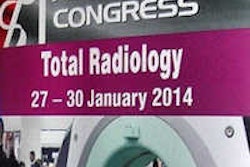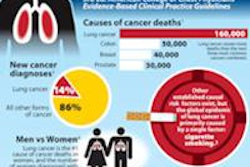CT might be the mainstay of medical imaging, but the basic curriculum for radiologic technologist (RT) training hardly mentions the modality, and training centers that do teach it are few and far between, according to a talk on May 10 at the Virtual Symposium on Radiation Safety and Computed Tomography.
None of this is particularly positive -- though there are a few hopeful signs -- in a world that increasingly relies on CT and qualified technologists to acquire the images skillfully at the lowest possible dose, said Dr. Myke Kudlas, chief academic officer of the American Society of Radiologic Technologists (ASRT). The symposium was organized by the University of California, San Francisco.
Ample warning
It's not as though the shortage of training opportunities struck without warning. In 2007 and 2008, when ASRT and the American Registry of Radiologic Technologists (ARRT) convened panels to discuss growth of the technology and the need for education, "we knew that CT use was increasing in medicine, and we knew that a lot of other modalities besides radiography were getting into CT -- notably radiation oncology and nuclear medicine," Kudlas said.
"In nuclear medicine, CT was used more and more in PET/CT, and with radiation therapy they were using CT for simulation," he said. "It was also becoming the standard modality for evaluating certain types of trauma and certain types of pathology."
The panels discussed CT's role then and in the future, and the role "technologists play in ensuring high-quality care as medical imaging continues to evolve," he said. Unfortunately, today, educational opportunities remain slim, and CT represents only the smallest part of technologist training, which remains focused on radiography.
"We found an increasing number of pediatric and adolescent exams, and 68% of CT technologists believed that entry-level programs should be increased through on-the-job training or standalone programs," Kudlas said, citing a 2008 CT educational needs assessment survey of U.S. residents. "The fact that 68% of technologists believed there should be an increase in CT education tells us that people didn't feel totally secure when learning CT, and felt there should be more background knowledge before they got into it."
Other countries have taken reasonable steps to bolster CT training. In the U.K. and Canada, for example, CT is considered part of the core curriculum, so when someone graduates they are prepared to work with the modality.
"In our curriculum, [we try to] give a little foundational knowledge in CT, but by no means is a new graduate prepared to start working in a CT department immediately; they're going to need additional training," Kudlas said.
The standard radiography-focused curriculum certainly contains some helpful information for crossover efforts, such as radiation dose education, but there is no uniformity in the curriculum or in the available opportunities, he said. Some programs might spend two to three hours covering CT; others might spend hundreds of hours. Most programs will take a quick look at the different generations of CT scanners, cover the basics of how the machines operate, and provide a primer on radiation protection.
ARRT doesn't require any kind of clinical competencies for entry-level technologists, and in the ASRT curriculum there are only three basic CT exams, all completely optional: the head, thorax, or abdomen.
"Beyond the primary exams, there is quite a bit of clinical competency that must be demonstrated, but for entry-level radiographers, no clinical competencies in CT are required, and in fact I believe ARRT is in the process of removing any questions related to CT from their entry-level exam," Kudlas said.
On the other hand, students looking for CT certification need to be able to demonstrate more than 100 clinical competencies in CT before they are even eligible to sit for the exam. But with scanners nationwide filled to capacity with patients, very little scanner time is available for students to learn, and the need is urgent.
"Right now, there are only four known CT programs in the country where somebody could go and take a CT course and get the clinical competencies, and when you think of how many people want to do a CT program, that's not very many," Kudlas said. "CT needs assessment tells us that 95% of CT techs who are performing CT get their training on the job."
What's needed
Technologists have made it clear they need more education and other improvements.
Kudlas believes a common lexicon and terminology protocols should be created for everyone, including radiologists, RTs, and especially vendors.
"Anybody who works in digital imaging knows there's quite a bit of variation between vendors," he said. "The same is true with CT technology and equipment where vendors call the same type of process by different names depending on the type of equipment." Trying to make that language vendor-neutral is something CT technologists really want to see.
There should also be incentives for certification set by federal or state statutes, either financially or through promotions.
"Right now, they feel like there is little certification in the CT arena," Kudlas said. "They would like to see the educational gap being bridged. Whether by online courses or onsite at training centers, there is a lot of pressure now to provide education to ease the training burden on clinics," which are busy taking care of patients. The need is especially acute in rural areas.
Vendor-led training is an important component of increased educational opportunities, he said. One very effective model currently being used is the "superuser," by which the vendor trains one or two individuals onsite, who then return to their departments to train others.
This addresses the time issue facing some managers, who can't send their entire staff to vendor-led training, Kudlas said, citing an ASRT learning preference survey from this spring. Some would rather learn online and some through reading.
"CT is a rapidly changing landscape; technologists need additional education, and we need to be as efficient as possible with that education and with training in the fiscal climate that we're in," he said. "So whether it be online or in person, we need to provide opportunities to technologists so they can become certified."



















